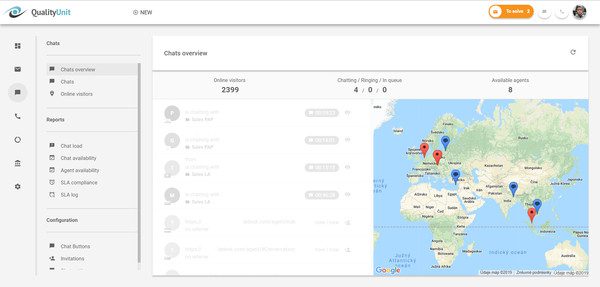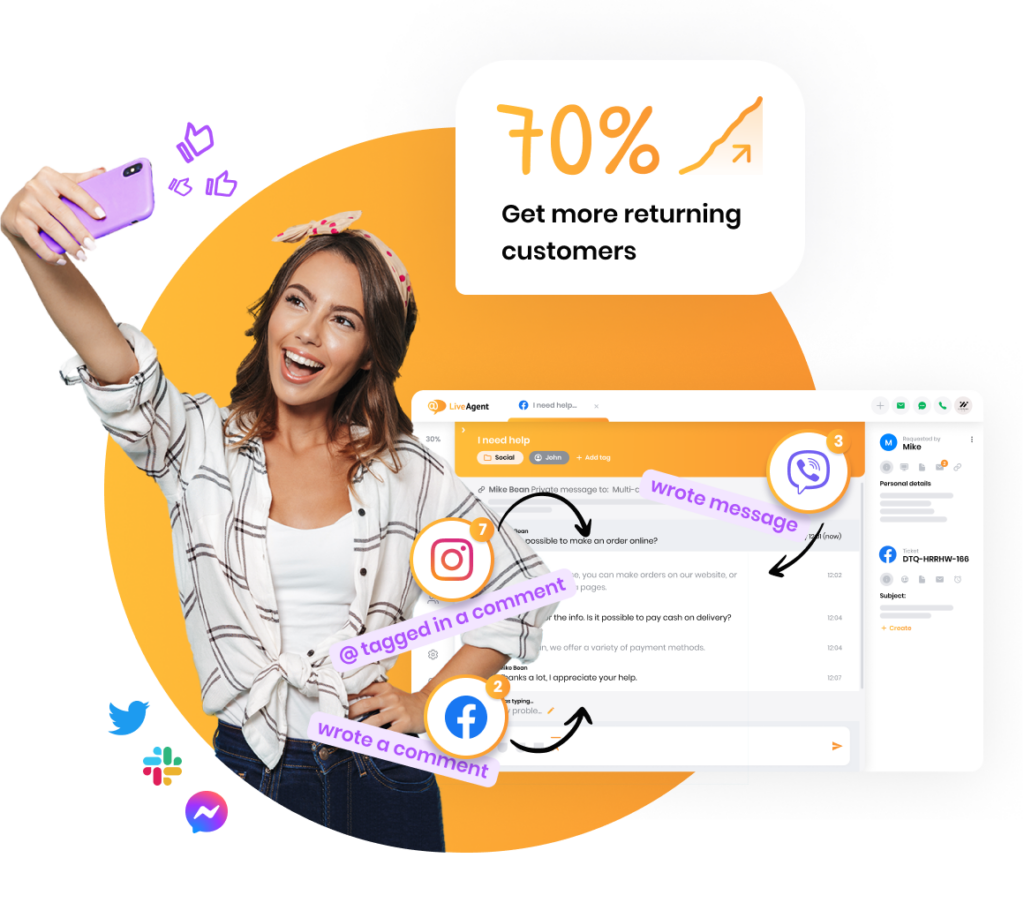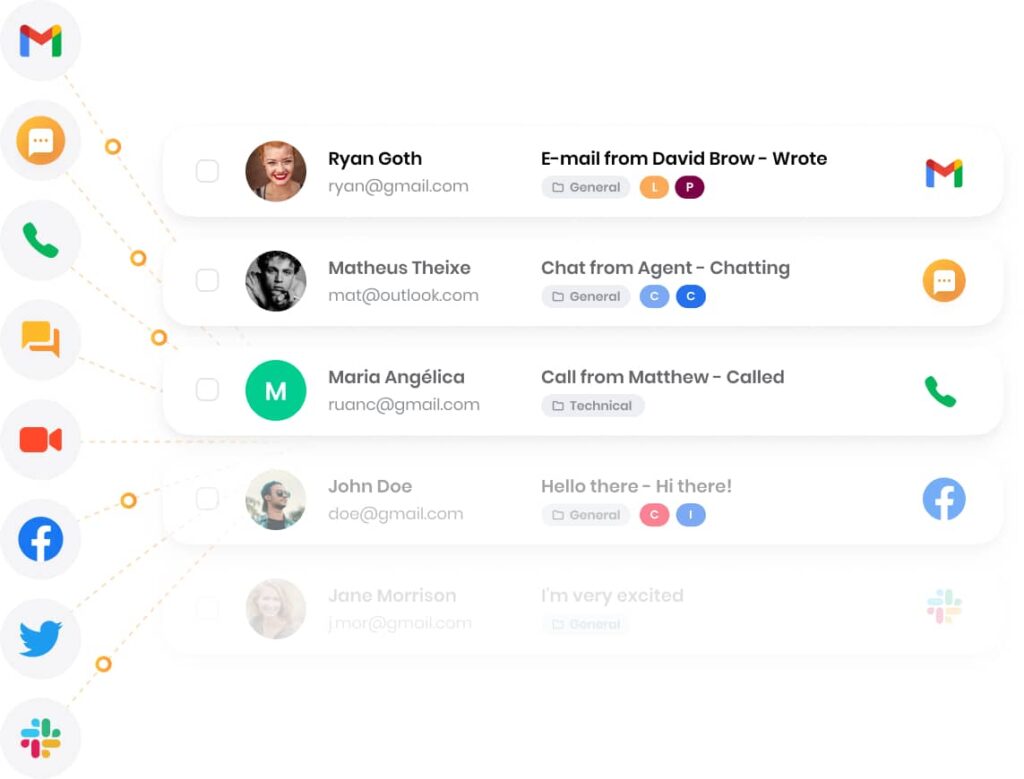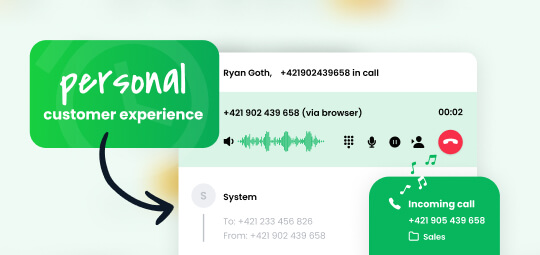Every day, consumers face an overwhelming multitude of choices, and understanding the psychology behind their decisions is crucial for businesses aiming to thrive in this competitive landscape. Customer psychology delves into the mental processes that drive buying behaviors, providing valuable insights into how emotions, perceptions, and social influences shape purchasing choices.
From the impact of emotional triggers to the subtlety of social proof, each component plays a pivotal role in crafting effective marketing strategies. Recognizing these psychological principles not only helps businesses engage their target audience but also fosters loyalty and trust, ultimately leading to increased sales.
In this article, we will explore the intricate world of customer psychology, offering actionable strategies to boost engagement and sales. Additionally, we’ll introduce how LiveAgent can be an essential tool for implementing these strategies effectively, enhancing the overall customer journey.
The importance of customer psychology in marketing
By grasping consumer psychology, marketers create strategies that resonate with consumers on a deeper level.
- Cognitive factors: These include perceptions and information processing that affect how customers view products.
- Emotional influences: Emotions can spur decisions, leading consumers to choose products that evoke happiness or trust.
- Behavioral patterns: Observing buying habits helps predict future actions, shaping better marketing campaigns.
Research methods like ethnography and consumer neuroscience delve deeper into these aspects. They help bridge the intention-action gap—why consumers don’t always follow through on their intentions.
By leveraging these insights, marketers can enhance customer experiences. Engaging customers emotionally turns them into brand advocates. Brands such as LiveAgent use these strategies for exceptional customer service, making clients feel valued and understood.
A solid understanding of consumer psychology enables marketers to craft customer-centric and ethical approaches, leading to loyal customers and business growth.
Understanding consumer behavior
Understanding consumer behavior is vital for marketers and business owners. It means delving into the psychological factors that influence how and why people buy products. Researchers explore how purchase decisions are made, who buys them, and the experiences tied to these products or services.
By tapping into demographics, personality, lifestyles, and behavioral variables, marketers can shape consumer attitudes and decisions. These elements influence how markets react to price changes, allowing businesses to better align their strategies with consumer needs.
New research methods such as ethnography and consumer neuroscience provide deeper insights into decision-making. They shed light on the intention-action gap, or why people don’t always act on their intentions. By utilizing this knowledge, product managers can tailor offerings to better meet consumer demands.

The role of emotions in purchasing decisions
Emotions play a crucial role in consumer decision-making. Often operating below the surface, emotions can lead to impulse buying, especially during heightened emotional states.
Positive emotions evoked by product design and marketing can strengthen the bond between consumers and brands. This bond enhances customer satisfaction and loyalty. Businesses need to understand how emotions affect preferences to effectively drive purchasing decisions.
Balancing rational factors like price and emotional factors like brand image is essential. Behavioral economics highlights how cognitive biases, often rooted in emotions, guide consumers toward certain decisions.
Psychological triggers that influence buying
Consumer psychology examines the perceptions, beliefs, and thoughts that impact buying behavior. This understanding helps businesses craft effective marketing strategies.
Psychological factors such as identity, communication styles, and cultural backgrounds shape consumer decisions. External influences like advertising and brand trustworthiness can trigger significant psychological impacts on consumer choices.
| Trigger | Impact |
|---|---|
| Identity | Shapes consumer profile and decision-making |
| Social Persuasion | Drives choices through advertisements |
| Brand Trust | Influences preference and purchasing confidence |
| Scarcity | Creates urgency in purchase decisions |
Understanding perceived scarcity and economic uncertainty can explain seemingly illogical consumer actions. These complex interactions of psychological influences are key to addressing the intention-action gap.
Utilizing social proof for trust and credibility
Incorporating social proof elements like testimonials, ratings, and reviews can build trust with potential buyers. Highlighting features that encourage interaction can create a community feel among users.
Social proof leverages the psychological influence of others’ opinions, creating compelling product experiences. It fosters positive emotions and shared experiences, enhancing user engagement and satisfaction.
By integrating social proof into marketing strategies, brands can strengthen their credibility and reputation. This not only drives business success through improved customer trust but also builds lasting relationships.
Brands like LiveAgent effectively incorporate social proof into their strategies to deliver outstanding customer service. By making clients feel valued, LiveAgent builds trust, proving that understanding consumer psychology is a pathway to growth and loyalty.

Psychological principles to consider
At its core, consumer psychology blends psychological insights with human behavior to reveal the factors influencing customer choices, such as social status, identity, and decision-making processes. In today’s digital age, the boom in e-commerce and digital marketing leads to a data-driven approach that focuses on understanding consumer behavior patterns and preferences. Ethical considerations, bolstered by clinical consumer psychology, play a role in enhancing segmentation and targeting, all while promoting responsible corporate behavior.
Reciprocity: giving to receive
Reciprocity is an influential social norm that suggests favors should be repaid, generating a sense of indebtedness even when gestures are unsolicited. Consumers often feel obliged to reciprocate, leading to increased engagement with brands when they perceive goodwill. This principle can be crucial in marketing strategies. Promotions that leverage reciprocity foster customer relationships, as consumers return the favor by engaging more deeply with the brand or product. By offering meaningful initial favors or value, marketers can effectively enhance persuasion and drive consumer loyalty.
Scarcity: Creating urgency in sales
Scarcity drives consumer behavior by creating a sense of urgency and exclusivity. When products are perceived as limited, consumers are more inclined to purchase quickly. Marketers can heighten this effect by emphasizing factors such as economic uncertainty or global events that increase scarcity perceptions. Effective use of scarcity can enhance the perceived value of a product, as consumers often equate scarcity with desirability. By understanding these emotional motivations, brands can strategically position themselves to influence consumer purchasing behavior.
Anchoring: Setting price expectations
Anchoring plays a pivotal role in pricing strategies. By establishing an initial price reference, brands influence consumers’ perceptions of value. Shoppers often assess prices based on the first number they encounter, making it crucial for managers to strategically set these prices. Behavioral economics highlights that anchoring can sway consumers toward specific purchases. For example, presenting higher-priced alternatives alongside a target product can create a comparative context, making the main product appear more attractive. Mastery of anchoring effects enables brands to craft compelling pricing strategies and marketing messages.
Boost sales with customer psychology
Understand what drives customer decisions and use data-driven insights to enhance engagement and loyalty. Turn psychology into business growth.
The consumer decision-making process
Consumer psychology is the study of how thoughts, beliefs, and perceptions influence consumer behavior. This insight allows companies to tailor their strategies to effectively meet consumer needs. The consumer decision-making process can be broken down into five main stages: problem recognition, information search, evaluation of alternatives, purchase decision, and post-purchase behavior. These stages help explain the psychological factors that shape consumer choices and how businesses can efficiently address them.
Stages of the decision-making process
- Problem recognition: This stage occurs when a consumer becomes aware of a difference between their current situation and a desired state. For instance, you might realize you need a new phone because your old one is malfunctioning. Understanding consumer psychology aids businesses in spotting the underlying motivations that trigger this recognition.
- Information search: After recognizing a problem, consumers begin searching for information to solve it. They gather data from various sources, such as online reviews or personal acquaintances. Here, consumer psychology plays a role in how people perceive and process information, potentially leading to biases in decision-making.
- Evaluation of alternatives: At this stage, consumers compare different options identified during the information search. They evaluate products based on criteria like price, quality, and features. Businesses can gain insights into how consumers weigh these options by understanding their psychological preferences and biases.
- Purchase decision: Once alternatives are evaluated, the consumer makes a purchase decision. Emotional and environmental triggers can heavily influence this stage. By capitalizing on psychological factors like brand recognition, businesses can encourage quicker decisions.
- Post-purchase behavior: After buying a product, consumers reflect on their purchase, assessing satisfaction levels. Their evaluation can impact future buying decisions and brand loyalty. Thus, ensuring a positive post-purchase experience is crucial for businesses.
Problem recognition and need identification
Problem recognition is the critical first phase of the consumer decision-making process. It is when consumers sense a gap between their current situation and where they wish to be, prompting them to seek solutions. For example, realizing your fridge is broken triggers the need for a replacement.
Understanding consumer psychology allows businesses to grasp the factors that lead to problem recognition. Psychological elements such as emotions, motivations, and individual needs greatly affect how consumers perceive problems and decide to seek solutions. Upon recognizing a need, consumers embark on an information search to explore potential solutions. Knowing when a consumer might recognize a need enables businesses to tailor their marketing efforts, positioning their products as ideal solutions.

Mastering consumer psychology and its effect on the decision-making journey empowers businesses to cater to buyers’ needs adeptly. This strategic approach paves the way for successful marketing and increased customer satisfaction.
Key strategies to enhance engagement
Consumer psychology focuses on the cognitive, emotional, and behavioral factors influencing buyer decisions. By diving into these factors, companies can develop marketing strategies that resonate with their target audiences.
Personalization and its impact on consumer connection
Personalization plays a critical role in enhancing user experience. When brands tailor products and recommendations to individual preferences, it fosters a sense of connection and loyalty. A striking example is Netflix, which sees over 80% of viewers select content based on personalized recommendations. To achieve effective personalization at scale, brands must understand consumer behavior thoroughly, utilizing data analytics to guide customization efforts.
Executives increasingly recognize the importance of real-time delivery of personalized experiences. About 85% acknowledge this as vital for branding success. Businesses that meet consumer expectations for individualized interactions often gain a competitive edge. This demand for personalized experiences highlights the necessity of integrating advanced data insights into marketing strategies.

The power of storytelling in marketing
Storytelling is a potent tool in marketing, allowing brands to connect emotionally with their audience. It creates a unique brand identity that resonates with consumer values and aspirations. Through storytelling, companies can develop persuasive advertising messages that tap into consumer motivations and emotions.
Incorporating storytelling elements in marketing communications enhances the likelihood of purchase by ensuring that consumers process brand information effortlessly. Comparative advertising, which often uses storytelling, can capture attention and persuade effectively, although it’s preferable to make positive comparisons to avoid moving into bias territory. As consumer psychology evolves, innovative storytelling approaches become crucial, adding depth to marketing campaigns.
Information search and evaluation
The information search stage is where consumers actively seek out the necessary data to solve identified needs or problems. This stage is heavily influenced by internal motivations and past experiences. During the evaluation of alternatives, consumers rely on various attributes and factors, often leading to biases impacting their choices.
Consumer psychology plays a vital role in understanding how individuals interpret and assess information. When consumers are motivated and able to deliberate deeply, they explore more options and details. Conversely, in lower-stakes situations, they might rely on simple heuristics, favoring familiar brands or basic cues.
Businesses striving to engage consumers should consider these strategies seriously. Incorporating personalization, storytelling, and an understanding of consumer behavior into marketing plans can elevate brand engagement. For those looking for a comprehensive solution to streamline customer interactions, LiveAgent stands out as an optimal choice, offering robust features to address reader’s pain points in the customer service space.

How to use customer psychology to boost sales
By applying consumer psychology insights, businesses can craft marketing campaigns that resonate both emotionally and rationally with consumers. Here are some strategies to consider:
- Highlight the benefits: Focus on how your product solves a problem or meets a need. Clearly outline both the emotional and practical benefits.
- Engage emotionally: Use storytelling in your marketing to build an emotional connection with your audience.
- Emphasize quality and service: A commitment to high-quality products and exceptional customer service fosters loyalty and encourages word-of-mouth referrals.
- Utilize psychological insights: Research methods like ethnography and consumer neuroscience provide valuable insights. They help bridge the gap between consumer intentions and actual purchasing actions.
- Incorporate feedback: Post-purchase feedback is crucial. Encourage reviews and learn from them to improve customer experience.
Incorporating consumer psychology into your business strategy can lead to more effective marketing and increased sales. A focus on delivering quality experiences and addressing both rational and emotional consumer needs will help in achieving this.
When it comes to providing exceptional customer support, LiveAgent stands out. Its features can help businesses enhance their customer interaction, ensuring a smoother journey from purchase decision to post-purchase support. Adopting such tools can significantly improve overall customer satisfaction and loyalty.
Boost sales with customer psychology
Understand what drives customer decisions and use data-driven insights to enhance engagement and loyalty. Turn psychology into business growth.
Conclusion
Consumer psychology is key to understanding what drives people to make buying decisions. This field looks into how emotions, social norms, and personal values shape consumer behavior. By grasping these elements, businesses can tailor their products and marketing strategies to meet consumer needs more effectively.
A deep dive into consumer psychology helps companies create appealing offerings that align with what customers truly desire. Understanding these psychological factors equips businesses to make informed decisions, leading to positive customer experiences and increased loyalty.
Incorporating insights from consumer psychology means going beyond outward behaviors. It involves exploring the motivations and perceptions behind buying choices. This approach ensures that marketing strategies resonate on a deeper level with consumers.
To put these insights into action, businesses can rely on tools like LiveAgent. Designed to enhance customer experiences, LiveAgent offers a 30-day free trial, enabling businesses to improve service interactions and foster strong relationships with their customers. By leveraging consumer psychology, companies can better connect with their audience, ultimately boosting satisfaction and loyalty.
Frequently Asked Questions
What does consumer psychology cover?
Consumer psychology covers various topics such as; how consumers choose between different products/services/brands, consumer behavior research – shopping in-store or online, or the influencing aspects of marketing campaigns, such as wording, design, placement, and timing.
What is consumer behavior?
Consumer behavior is the study of individuals and businesses and how they select products or services.
What's the purpose of customer behavior?
The purpose of studying consumer behavior is to gain a better understanding of consumer psychology. Moreover, to find the motivations that go into selling your products/services to prospective clients.
Smart customer satisfaction software
Boost customer satisfaction in 2025 with LiveAgent! Deliver personalized, 24/7 support on every channel. Free trial, no credit card needed.
Customer communication management software
LiveAgent customer communication management software will provide personalized, quick, and knowledgeable service to your customers. Try it for free.
Understanding customer retention: Definition, importance, and strategies
Master customer retention with 13 proven strategies, key metrics, and real examples. Boost loyalty, profits, and brand reputation today!

 Български
Български  Čeština
Čeština  Dansk
Dansk  Deutsch
Deutsch  Eesti
Eesti  Español
Español  Français
Français  Ελληνικα
Ελληνικα  Hrvatski
Hrvatski  Italiano
Italiano  Latviešu
Latviešu  Lietuviškai
Lietuviškai  Magyar
Magyar  Nederlands
Nederlands  Norsk bokmål
Norsk bokmål  Polski
Polski  Română
Română  Русский
Русский  Slovenčina
Slovenčina  Slovenščina
Slovenščina  简体中文
简体中文  Tagalog
Tagalog  Tiếng Việt
Tiếng Việt  العربية
العربية  Português
Português 




